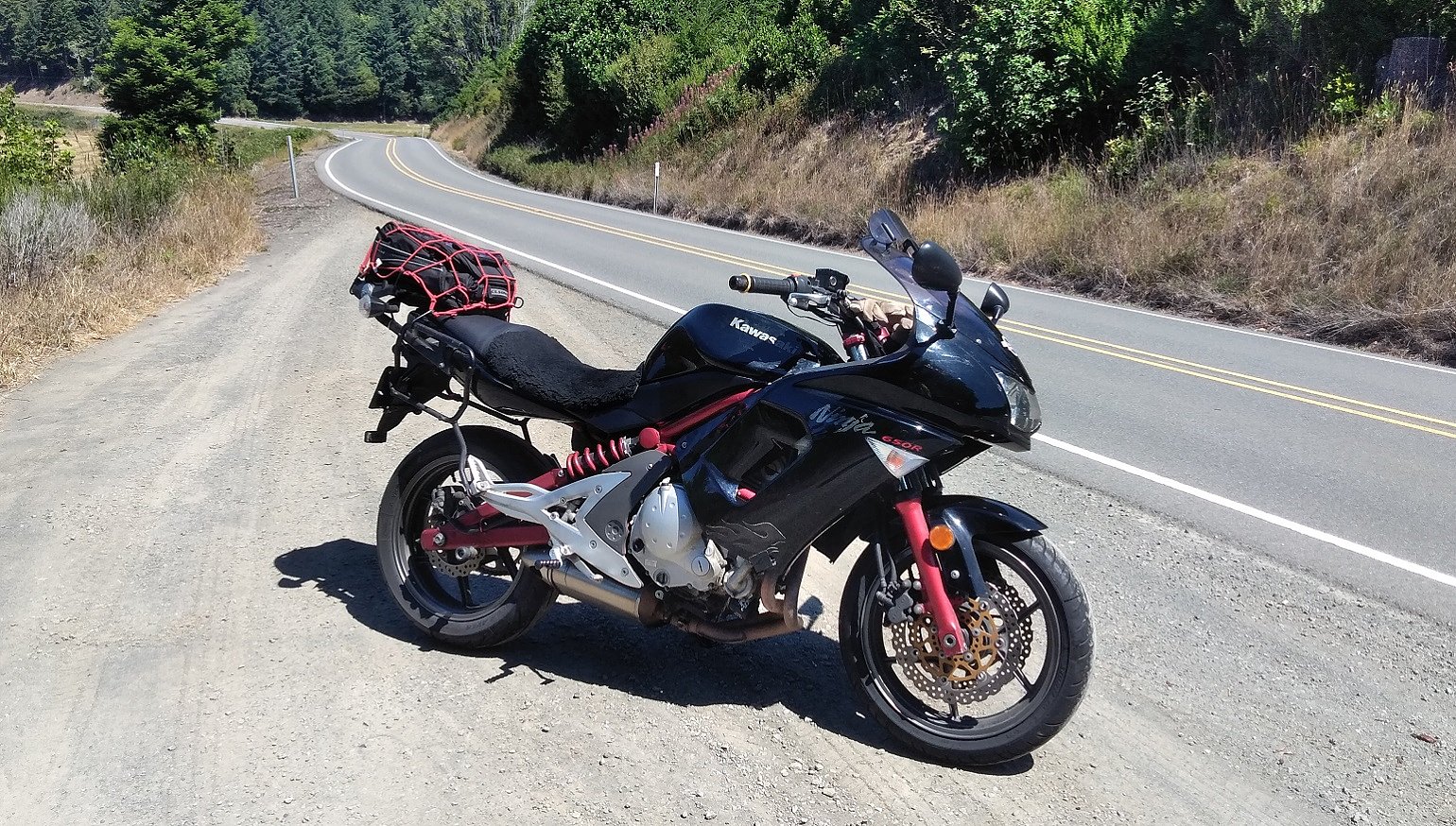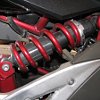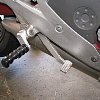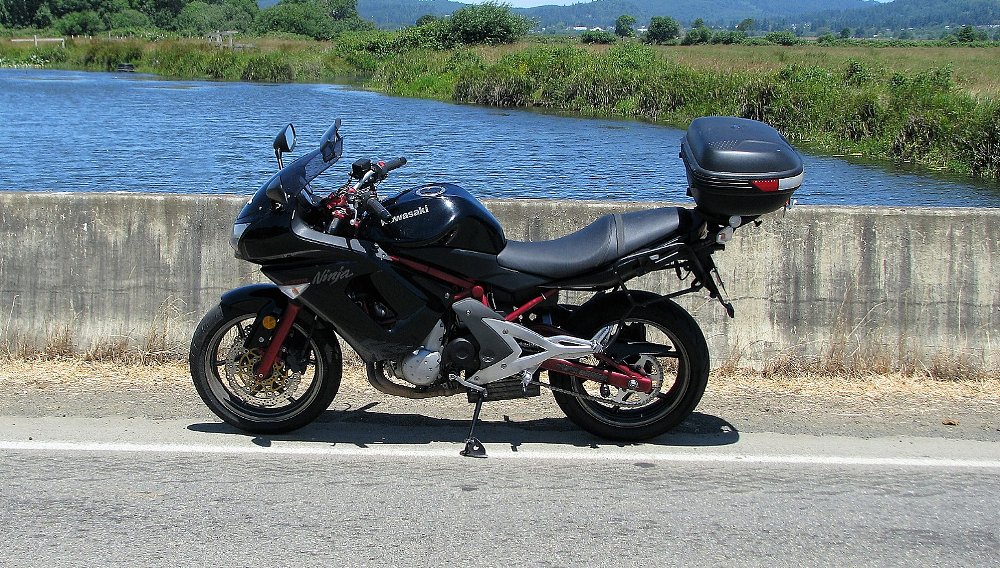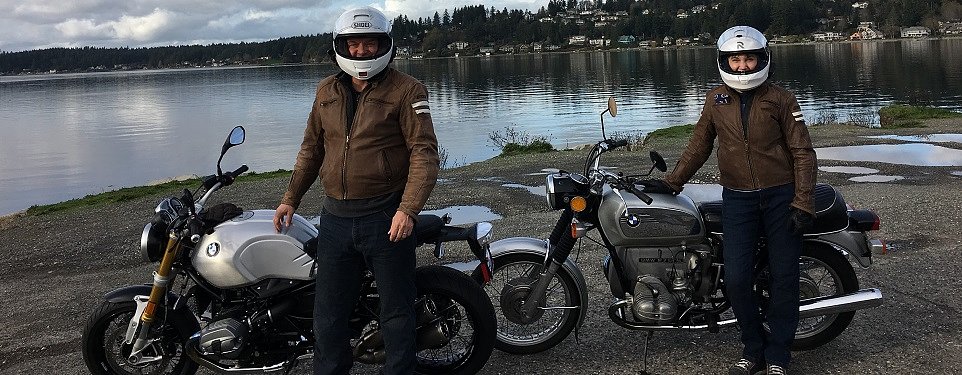Three years ago I watched my 2000 Honda VFR800 leave my garage for the last time, headed for its new home in Canada, and began my longest period of bikeless life since I started riding 50 years earlier.
The circumstances that contributed to its sale to my friend from the frozen north were mainly physical, lingering after-effects from two long-ago crashes that worsened with age. The VFR’s riding position had become intolerable, and not even raised hand grips and lowered footpegs made a difference.
During the layoff my priorities changed. Long-distance riding no longer appealed to me, nor did a major investment in something I’d probably ride only two or three times a week. Then last year my old dog died, and in January of this year I got a new one. Sophie is now eight months old, and her puppyish demands on my time and attention as yet know no bounds. Life was pretty full, even if my garage was empty.
I still found time, somehow, to browse the motorcycle classifieds every day in case an irresistible deal came along that would get me back on two wheels, if only for short hops on nice days. What I wanted was a bike I wouldn’t feel compelled to ride constantly to justify the investment, and that I wouldn’t have to work on for two hours for every hour I rode it. In short, a cheap, reliable beater.
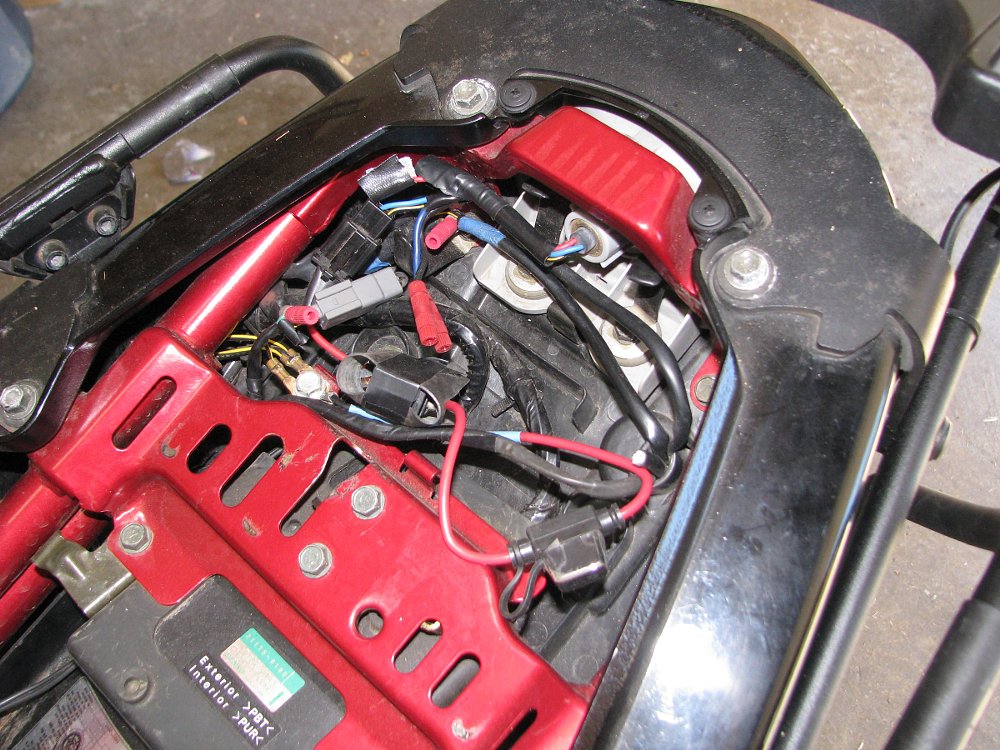
Not long ago, my friend Larry decided to thin the herd of eight or nine bikes and scooters in his stable. I had ridden one of them, a 2006 Kawasaki Ninja 650R, and liked it. To my surprise, he offered me a knockdown price on it, an entirely affordable $750. That’s not a typo. The Ninja ran, had some useful accessories like heated grips and a volt meter, and showed 35,391 miles on the odometer, a number I was assured by those in the know indicated the bike was barely out of its adolescence. Larry even threw in Givi hard cases and a track stand. How could I say no?
I recently wrote some tips for re-entry riders. The Ninja made me one. But first it needed some attention.
Fixing up the Ninja 650R
While it was by no means a beater, the Ninja hadn’t been ridden regularly for some time and needed a big helping of TLC. It exhibited the eccentricities of some high-mile, one-owner bikes, such as over- and under-torqued hardware, improvised repairs that were somehow never made right, cracked plastic (“See that flame decal?” Larry said, pointing to the fairing. “Don’t peel it off. There’s a big hole under it.”), and a kudzu vine of accessory wiring under the seat. On the plus side, the chain and sprockets were new and the tires, though installed six years ago, were still good.
The last oil change was done at the same time as the tires were spooned on so my first job was to pull off the fairing’s two-piece belly pan and drain the oil. Getting the oil filter off was problematic. The cute little tinfoil nut welded on the end of the housing crumpled long before the torque needed to loosen the filter was reached. Remarkably, none of the four filter wrenches I had could loosen it. A run to CarQuest produced one and increased my tool inventory.
Then the belly pan wouldn’t go back on. If the holes lined up, the tabs and slots didn’t, and vice versa. While lying on my back with sweat pouring into my eyes it occurred to me the belly pan’s only contribution was aesthetic. It now lives on a high shelf, and the homely underside of the engine is defiantly exposed. My dreams are now haunted by visions of a streetfighter conversion that does away with the entire fairing.
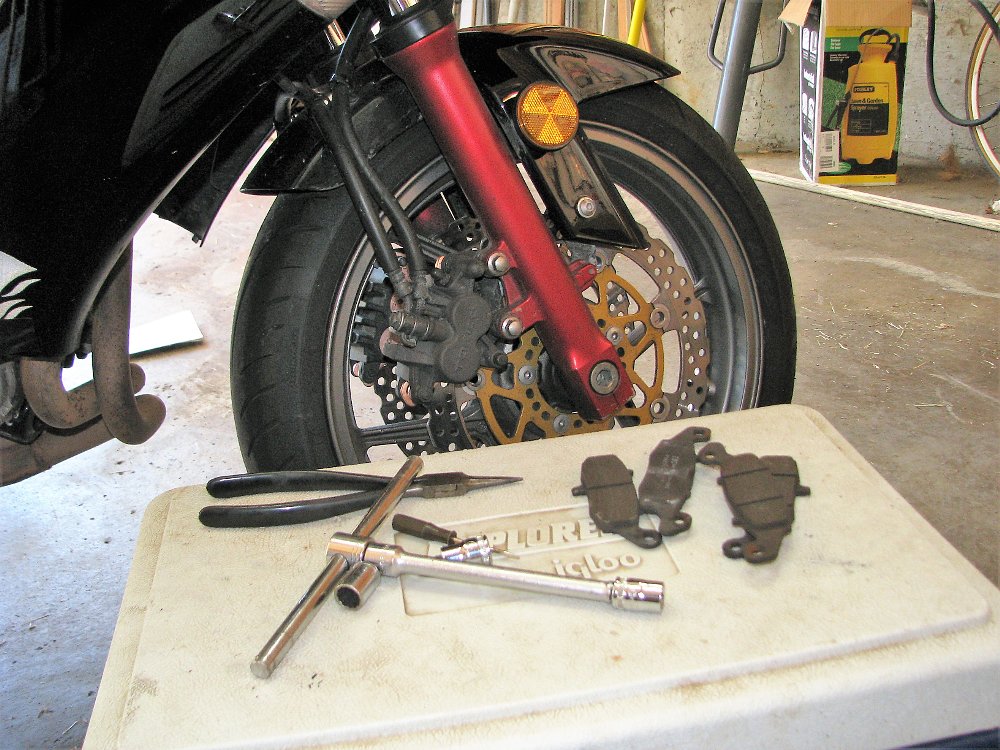
The Ninja’s brakes stopped it, but not that enthusiastically. It took a lot of lever or pedal travel to wake them up, and here in deer country that can mean the difference between you and Bambi parting as friends or meeting as combatants. The pads were semi-metallics, known to be kind to disc rotors and to last a long time, but not renowned for fierce stopping power. I replaced them with HH sintered-metal pads. They have right-now initial bite and send much more reassuring messages through the lever.
Period road tests of the ’06 650R often described the suspension as "firm," probably because they didn’t use words like "shitty" back then. The single rear damper had long since absorbed its last good shock, and the fork was stiff with very little travel. Here’s where I sat down and had a talk with myself. The aftermarket shocks I found cost more than I’d paid for the entire bike. Used ones on eBay were much cheaper but there was no guarantee they’d work any better than what I had. I could drop some cartridge emulators in the forks, but once again the cost-benefit ratio didn’t pencil out. I filed the suspension under "Live with it."
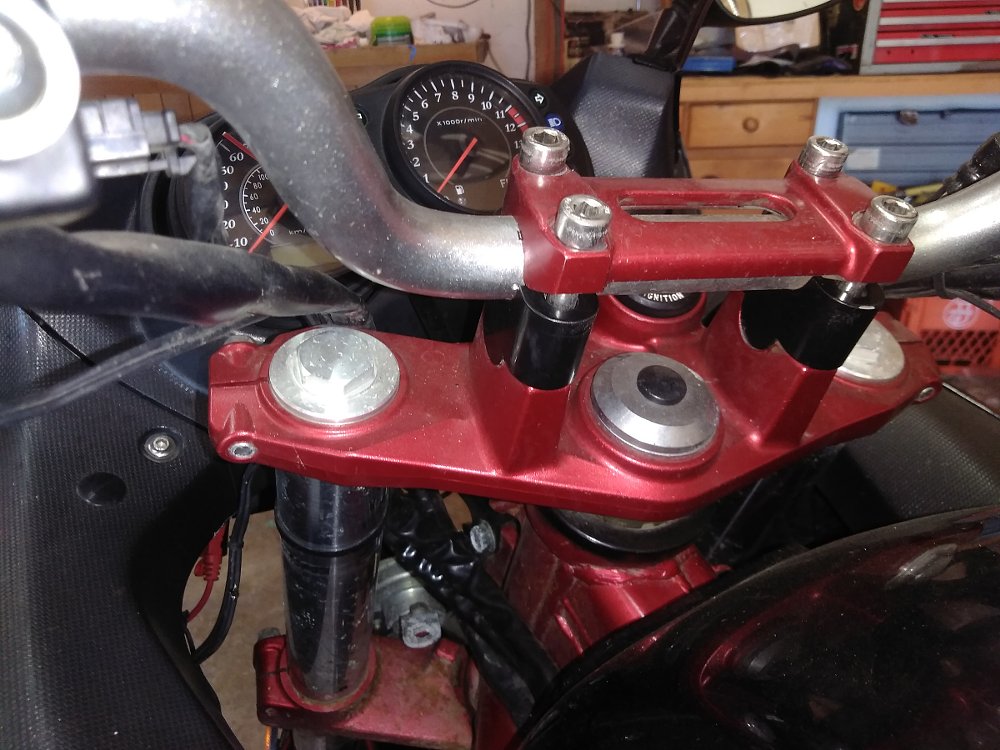
I sold the VFR because it hurt to ride it. The Ninja was smaller, shorter and paradoxically more comfortable, but the pegs were still too high and the handlebar too low. Fortunately both were easy to fix, and both fixes came courtesy of Larry. He gave me a set of adjustable footpegs — I had to buy bike-specific mounts for them — and a set of bar risers off of… well, off of something he owned. He wasn’t sure what. They weren't the right color, or the right shape to match the top clamp, but they worked, which is better than looking good.
A few test rides and minor adjustments confirmed that I’d done just enough of the right things to make the bike fit me better than when I bought it. Now I was down to details. Since I have no objection to hand-lubing chains, which gives me a chance to get down and inspect both the chain and the rear tire, I took off the automatic chain oiler. I yanked the wiring for accessories that I don’t have or wouldn’t use and hooked up the power cradle for my GPS. The final touch was robbing the sheepskin from my office chair to put over the Ninja’s seat.
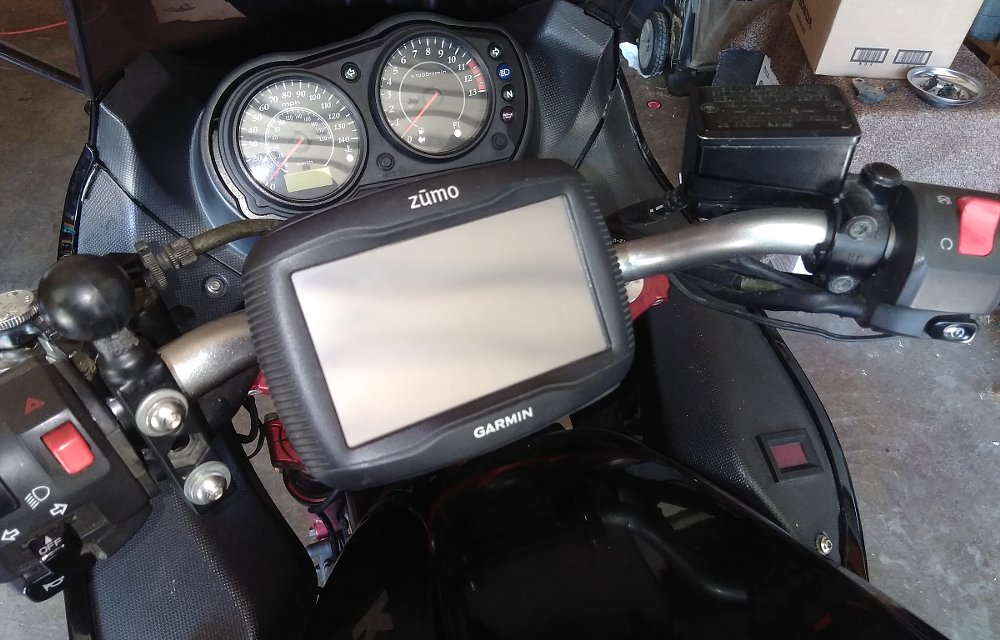
All told I have about $1,100 in the Ninja, not including title transfer and insurance. Even with my not-inconsiderable bulk in the saddle, it’s returning just over 50 miles per gallon, is comfortable enough to ride for an afternoon without beating me up and doesn’t make me feel guilty about not riding it every day because of all the money I have tied up in it. Odds are good that I’ll upgrade a few things over time — braided-steel brake lines, for example, and progressive fork springs — but for now the feeling I get every time I swing a leg over it can only be described as a cheap thrill.

 Membership
Membership

